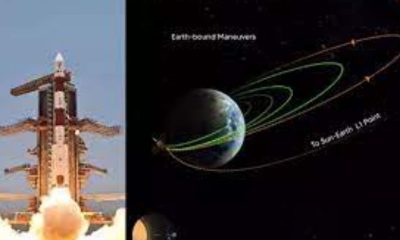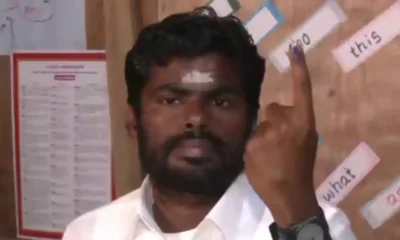Latest Science News
NavIC frequency too close to WiFi, may cause interference: Study

~By Dinesh C Sharma
NavIC, India’s very own navigation satellite system, is projected to provide positioning and navigation services on the lines of US-owned Global Positioning System (GPS). However, a new study has warned that signals from NavIC satellites may interfere with WiFi signals in receivers.
The Indian navigation and positioning system consists of a constellation of seven satellites launched by the Indian Space Research Organisation (ISRO) between 2013 and 2018. The technology is likely to be available on smartphones and car navigation systems in future.
The NavIC satellites send signals in frequency bands of L5 (1176.45 MHz) and S-band (2492.08 MHz). S-band is utilized by NavIC for navigation systems, but the same band is also shared by other communication systems like Long-Term Evolution (LTE), Bluetooth and Wireless Fidelity (Wi-Fi).
The study says that NavIC signals get affected by out of band interference due to Wi-Fi signal as the two are located closely. It found that “NavIC reception on S-band frequency is severely affected by Wi-Fi transmission.”
“These interfering signals present a threat to the NavIC receiver performance. To equip both the facilities (WiFi and NavIC) in future cell phones, it will be a challenge to mitigate such kind of radio frequency interference,” says the study published in journal Current Science. The study was done by Dr Shweta N Shah of Electronics Engineering Department at Sardar Vallabhbhai National Institute of Technology, Surat, and Ph D scholar Darshna D Jagiwala. ISRO’s Ahmedabad-based Space Applications Centre (SAC) provided necessary equipment for the study.
Explaining the findings, Dr Shah told India Science Wire that “NavIC has S band signals and there are much stronger terrestrial S band signals that can pose problem for S band and dual frequency Standard Positioning Service (SPS) receivers of NavIC if not addressed properly.”
Currently, she said “Wi-Fi receivers are present in every cell phone. That’s why it was necessary to study Wi-Fi interference to verify the performance of NavIC signal reception in cellphones. This kind of interfering signal represents a threat to the performance of the NavIC receivers.”
In the experimental set up having both types of receivers, it was found that a part of the S-band of NavIC system overlaps the unlicensed band which is shared by other communication technologies like Bluetooth, Wi-Fi and Industrial Scientific Medical (ISM) bands. When the frequency channel of Wi-Fi was superimposed with the frequency of the S-band signal of the NavIC receiver, interference was observed in S-band signal of NavIC receiver due to the extremely low power level of the signal at the user’s receiver.
aaaa
Wireless experts feel radio frequency interference between NavIC and other bands may pose regulatory challenges, besides quality of services. In India, Wi-Fi signals are exempted from licensing in the frequency band 2400 – 2483.5 MHz. This means the usable part of any Wi-Fi system or channel India must be contained within 2483.5 MHz.
“Residual or unintended signals normally go beyond this limit due to the basic characteristic of digital emissions. The NavIC signal is centered at 2492.08 MHz with a bandwidth of ± 8.25 MHz. This means that the lower part of NavIC signal can get interference from residual / unintended signals of Wi-Fi systems. Also, the upper part of the NavIC signal goes beyond 2500 MHz and since the frequency band above 2500 MHz is used for other purposes, NavIC receivers can pick up signals (and receive interference) from such other systems operating above 2500 MHz,” explained Pawan Kumar Garg, former Wireless Advisor, Government of India, while speaking to India Science Wire.
“To reduce interference from Wi-Fi (below 2483.5 MHz) as well as systems operating above 2500 MHz, it is desirable that the NavIC receivers should use reduced bandwidth of ± 7.5 MHz, if possible, and with sharp cut off filters on both ends,” Garg added. (India Science Wire)
India News
President Droupadi Murmu launches India’s first homegrown CAR T-cell therapy for cancer treatment
The gene-based therapy, which is developed by the IIT Bombay and Tata Memorial Centre, is being rolled out in India at about one-tenth of its price outside the country.
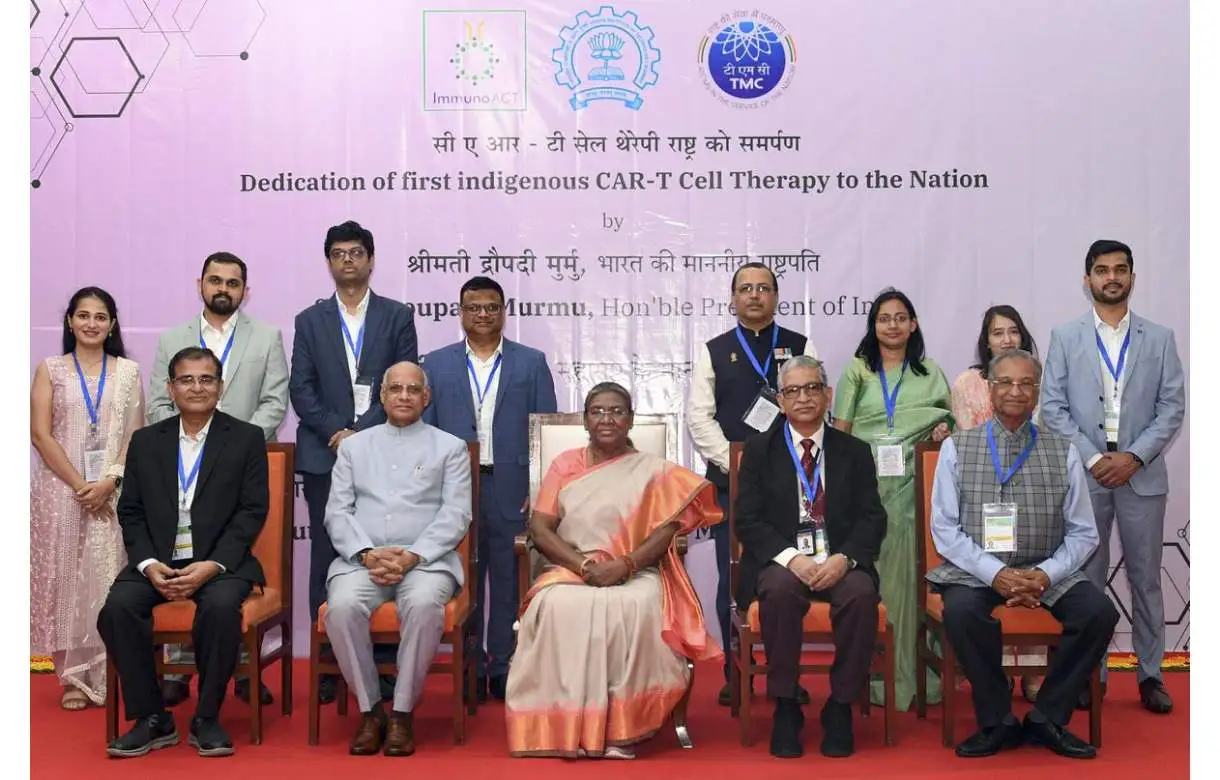
President Droupadi Murmu on Thursday launched India’s first indigenously-developed CAR T-cell therapy, a gene-based therapy, for cancer treatment, hailing it as a breakthrough that provides new hope for humankind in the battle against the diseases.
Speaking at the launch event at the Indian Institute of Technology (IIT) Bombay, Murmu said the indigenous development of the CAR T-cell therapy was an example of the Make in India initiative.
The gene-based therapy, which is developed by the IIT Bombay and Tata Memorial Centre, is being rolled out in India at about one-tenth of its price outside the country, as per the senior official.
In CAR T-cell therapy, a patient’s T-cells, which is a type of immune system cell or stem cell, are modified in the laboratory and inserted back into the patient to attack and destroy cancer cells after editing the stem cell.
The NexCAR19 CAR T-cell therapy, the country’s first Made in India CAR T-cell therapy, is expected to bring down the cost of treatment significantly.
During her speech, Murmu said that this therapy is considered a phenomenal advance in medical sciences. The development of this therapy is also an example of the Make in India initiative and speaks volumes about Indian scientists and physicians, she added.
The launch of India’s first gene therapy is a significant breakthrough in the battle against cancer. As this line of treatment, named CAR T-cell therapy, is accessible and affordable, it provides a new hope for the whole of humankind, President Murmu further added.
The Tata Memorial Centre director Sudeep Gupta said the CAR T-cell therapy was enormously expensive and out of the reach of an overwhelming majority of people.
Asserting that, he said NexCar19 needs to be custom manufactured for every patient under the most stringent conditions, but it has been rolled out at approximately one-tenth of the price at which it is available outside India.
The treatment costs approximately Rs 4 crore abroad against Rs 30 lakh in India, said IIT Bombay director Prof Subhasis Chaudhuri.
He further said that the low-cost CAR T-cell therapy was a huge achievement for the country and cancer patients, and places India firmly on the global map of cell and gene therapy.
Comparing the achievement of Chandrayaan-3 with CAR T-cell therapy, Chaudhuri asserted that CAR-T cell therapy heralds India’s entry into the cell and genetic engineering group.
The Tata Memorial Centre director Gupta said the treatment will help some 20,000 Indians every year, and its rollout is a milestone in the field of cancer care and genetic engineering.
He added the CAR T-cell was not only a scientific achievement of the highest order but also had immense practical application. NexCAR19 will save many, many lives and wipe many, many tears, he emphasised.
India News
ISRO launches weather satellite INSAT-3DS to monitor Earth’s surface, oceans
The Naughty Boy has now become a mature, obedient and disciplined boy like PSLV, and GSLV as they have become a very robust vehicle for ISRO, said Tomy Joseph.
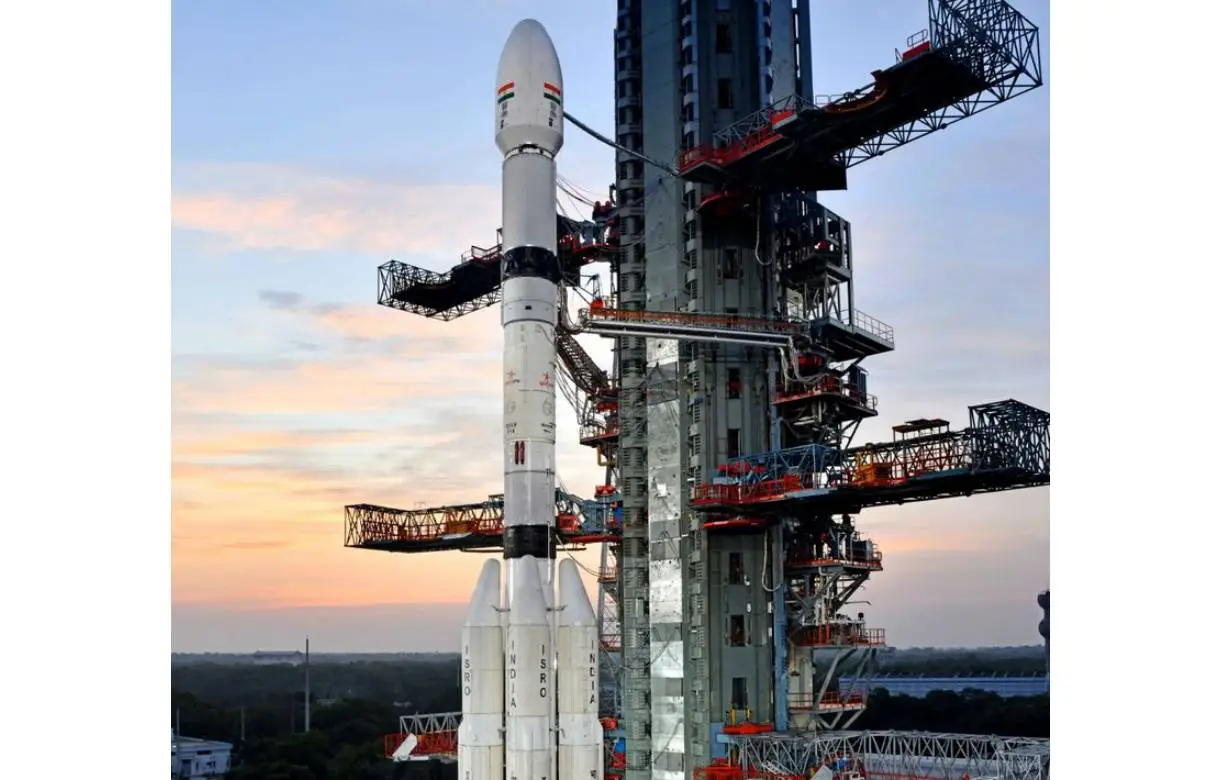
The Indian Space Research Organisation (ISRO) on Saturday launched the INSAT-3DS mission from Satish Dhawan Space Centre in Sriharikota at 5:35 pm to monitor the Earth’s surface, observe the ocean and analyse the environment through various essential meteorological perspectives.
In its mission, the Geosynchronous Satellite Launch Vehicle (GSLV) aimed to deploy the INSAT-3DS meteorological satellite into the Geosynchronous Transfer Orbit (GTO). Subsequent orbit-raising maneuvers will ensure that the satellite is positioned in a Geo-stationary Orbit.
After being positioned in GSO, it will provide information on diverse atmospheric conditions via vertical profiles. INSAT-3DS will manage data collection and dissemination from Data Collection Platforms (DCPs). The satellite will help in search and rescue services.
Congratulating the team, ISRO Chairman S Somanath expressed his happiness over the successful accomplishment of the mission GSLV-F14 INSAT-3DS. He further said that the spacecraft has been injected into a very good orbit. The space agency has also noted that the vehicle has performed very well.
The INSAT-3DS Mission Director, Tomy Joseph sarcastically remarked, saying the Naughty Boy has now become a mature, obedient and disciplined boy like PSLV, and GSLV as they have become a very robust vehicle for ISRO.
The Geosynchronous Satellite Launch Vehicle (GSLV) is a launch vehicle with a length of 51.7 meters and a liftoff mass of 420 tonnes. It consists of three stages, the first stage (GS1) is made up of a solid propellant motor with 139-ton propellant and four earth-storable propellant stages (L40) strapons. Each strapon carries 40 tons of liquid propellant.
The second stage (GS2) is also an earth-storable propellant stage that carries 40-ton propellant, and the third stage (GS3) is a cryogenic stage with a 15-ton propellant loading of liquid oxygen (LOX) and liquid hydrogen (LH2).
To protect the satellite during the atmospheric regime, it is covered by an Ogive payload fairing. The GSLV is versatile and can be used to launch various spacecraft capable of performing communications, navigation, earth resource surveys, and other proprietary missions.
The launch of INSAT-3DS was a follow-on mission of Third Generation Meteorological Satellite from Geostationary Orbit. According to ISRO, the GSLV-F14/INSAT-3DS mission has been fully funded by the Ministry of Earth Sciences (MoES) and designed for enhanced meteorological observations and monitoring of land and ocean surfaces for weather forecasting and disaster warning.
The satellite will augment the Meteorological services along with the presently operational INSAT-3D and INSAT-3DR satellites.
Notably, the services will be used by various departments of the MoES such as the India Meteorology Department (IMD), National Centre for Medium-Range Weather Forecasting (NCMRWF), Indian Institute of Tropical Meteorology (IITM), National Institute of Ocean Technology (NIOT), Indian National Center for Ocean Information Services (INCOIS) and various other agencies.
India News
PM Modi says day not far when an Indian will land on moon in indigenously built spacecraft
PM Modi said a strong roadmap has been drawn till 2040 for the space sector. He made the announcement after flagging off the first Namo Bharat train on the 17 km stretch of the Delhi-Meerut Regional Rapid Transit system.

Prime minister Narendra Modi on Friday said the government has drawn up a roadmap for the development of space sector and the day is not far when an Indian will travel to the moon in an indigenously built spacecraft. PM Modi said India’s Gaganyaan will soon take Indian astronauts to space and the India wants to establish its own space station.
PM Modi said a strong roadmap has been drawn till 2040 for the space sector. He made the announcement after flagging off the first Namo Bharat train on the 17 km stretch of the Delhi-Meerut Regional Rapid Transit system.
PM Modi recalled the success of India’s moon mission Chandrayaan3 which had recently placed the country’s tricolour on the lunar surface. He said India of the 21st century is writing new chapters of progress and development for the landing on the moon has left the world awestruck.
PM Modi added with impeccable hosting of the G20 summit, today’s India has become the centre of attraction and curiosity for the world. He said today’s India wins more than 100 medals in the Asian Games.
PM Modi added today’s India launches 5G on its own strength and takes it to all corners of India. He further added todays India does the highest number of digital transactions. He said the Namo trains that were flagged off today were all made in India.
PM Modi set goals for the Indian Space Research Organisation (ISRO) by asking engineers and scientists to work towards setting up an Indian space staion by 2035 and sending an Indian astronaut to the lunar surface by 2040. PM Modi also asked the scientists to undertake interplanetary missions like the Venus orbiter and also attempt a landing on Mars. PM Modi further added the government has handed over festival gifts by reducing the gas cylinder price by Rs 500 for Ujjwala Yojana beneficiaries.
-

 Entertainment22 hours ago
Entertainment22 hours agoBollywood stars Vidya Balan, Kartik Aaryan, Pratik Gandhi, Ileana D’Cruz, Mouni Roy, Radhika Madan, Mrunal Thakur attend Do Aur Do Pyaar premiere
-

 Cricket news21 hours ago
Cricket news21 hours agoHappy Birthday KL Rahul: Suniel Shetty wishes son-in-law KL Rahul on his 32nd birthday
-
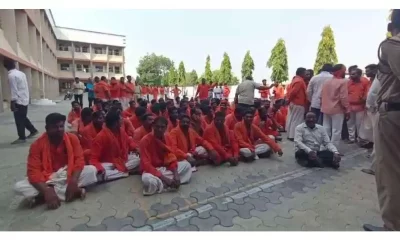
 India News24 hours ago
India News24 hours agoReligious outfit vandalises The Blessed Mother Teresa High School in Telangana after teachers object to students wearing Hanuman Deeksha dress
-
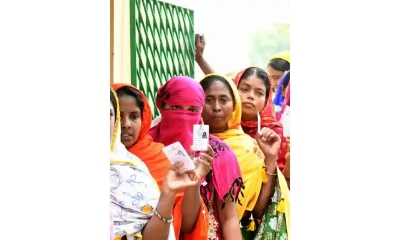
 2024 Lok Sabha Elections4 hours ago
2024 Lok Sabha Elections4 hours agoPrime Minister Narendra Modi urges citizens to vote in record numbers as voting for first phase of Lok Sabha elections begins on 102 seats across India
-

 India News19 hours ago
India News19 hours agoEnforcement Directorate seizes Shilpa Shetty’s husband Raj Kundra’s properties worth Rs 97 crore
-
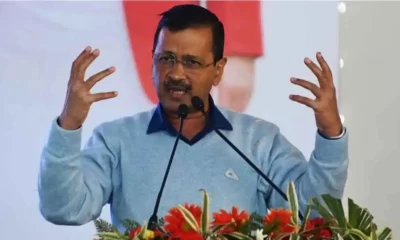
 India News18 hours ago
India News18 hours agoEnforcement Directorate says Arvind Kejriwal is deliberately eating mangoes, sweets, taking sugar with tea to increase his blood sugar level and create ground for bail
-
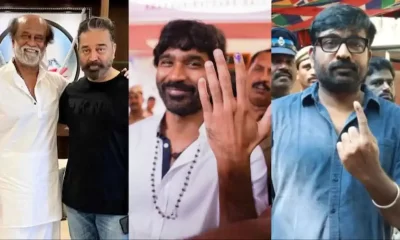
 2024 Lok Sabha Elections2 hours ago
2024 Lok Sabha Elections2 hours agoKamal Haasan, Rajinikanth, Vijay Sethupathi, Dhanush vote in Chennai
-

 2024 Lok Sabha Elections3 hours ago
2024 Lok Sabha Elections3 hours agoLok Sabha elections 2024: Google Doodle marks the start of polls with index finger voting symbol









